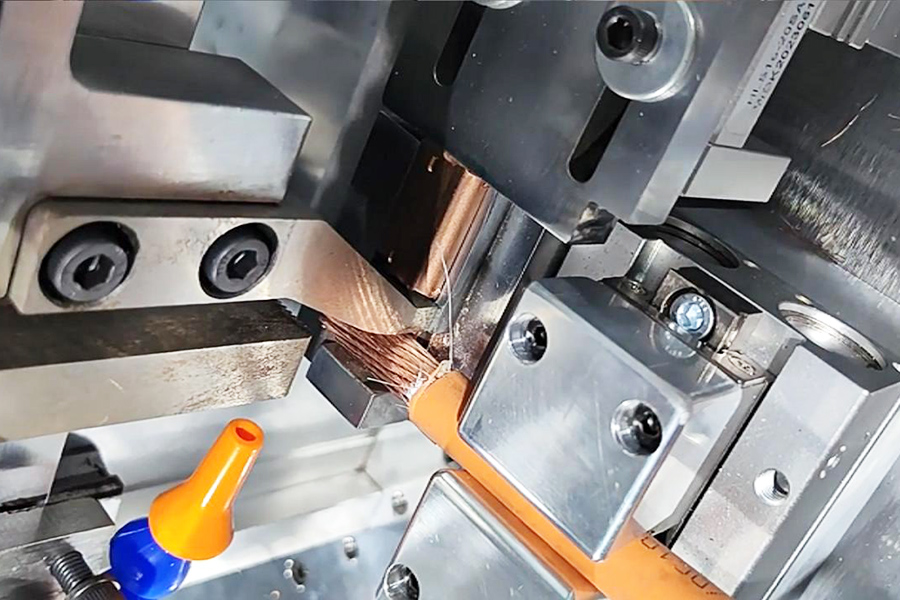An ultrasonic metal welding machine is a device that uses high-frequency sound waves to join metal parts without melting them. Ultrasonic metal welding is a cold welding process, which means that the metal parts are not heated up to their melting point, but rather plastically deformed by the ultrasonic vibrations. This process has many advantages over conventional welding methods, such as:
- It is ultra fast: The welding process takes only a few seconds or less.
- It is precise: The welding parameters can be adjusted to ensure consistent and reproducible results.
- It is cost-efficient: No additional materials, such as solder or filler, are required.
- It is environmentally friendly: It consumes very little energy and does not produce any harmful emissions or waste.
- It is strong and conductive: The welded joints have high mechanical strength and electrical conductivity, as the metal atoms are intermixed at the molecular level.
- It is gentle and safe: The metal parts are not damaged or distorted by the heat, and no sparks or smoke are generated.
Ultrasonic metal welding machines consist of four main components: a generator, a converter, an amplitude transformer, and a sonotrode. The generator produces a high-frequency electrical signal, which is converted into mechanical vibrations by the converter. The amplitude transformer amplifies the amplitude of the vibrations, and the sonotrode transfers them to the metal parts that are held in contact by an anvil. The ultrasonic vibrations create friction and pressure between the metal surfaces, which break up the oxide layer and cause the metal atoms to diffuse and recrystallize, forming a solid bond.
Ultrasonic metal welding machines are widely used in various industries, such as automotive, electronics, aerospace, and medical. Some of the common applications of ultrasonic metal welding are:
- Welding nonferrous metals, such as copper, aluminum, nickel, and tin, which are difficult to weld by other methods.
- Welding thin metal sheets, foils, and wires, which are prone to melting or breaking by heat.
- Welding dissimilar metals, such as copper and aluminum, which have different melting points and thermal expansion coefficients.
- Welding metal parts to non-metallic materials, such as plastic, ceramic, or glass, which have different physical and chemical properties.
- Welding battery cells, cable connections, solar panels, electric motors, sensors, and other electronic components, which require high electrical conductivity and reliability.
Ultrasonic metal welding is a modern and innovative technology that offers many benefits for metal joining. It is a fast, precise, cost-effective, eco-friendly, strong, and safe welding method that can be applied to a wide range of metal materials and products.

